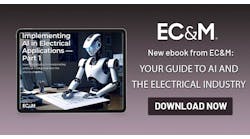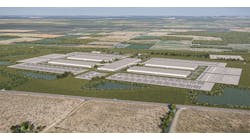Driving Improvements on the Building Energy-Efficiency Front
Efforts to make buildings more energy efficient continue to march along at a slow and steady pace. Improvements are being driven on two fronts: advancements in technology, and new codes and standards requirements. When combined, these two efforts form a formidable duo.
Our cover story this month, “Fine-Tuning the Codes,” takes a look at how California’s Title 24 Building Energy Efficiency Standard and the ANSI/ASHRAE/90.1 Standard continue to raise the bar on efficiency levels in non-residential buildings. Revisions to these two standards, and a number of others out there, are forcing developers, building owners, and property managers to account for these new requirements on new construction and major renovation projects. This story zeroes in on these two building efficiency initiatives: plug-load control and lighting control.
Plug-load control requirements were first introduced in the 2010 Edition of ASHRAE 90.1. The requirement calls for at least half of the building’s 120V receptacle outlets that serve private offices, open offices, and computer classrooms be provided with automatic receptacle control. The 2013 Edition of Title 24 followed suit with similar requirements. In addition, a controlled receptacle must be installed within 6 ft of each uncontrolled receptacle, or a split duplex receptacle with one controlled and one uncontrolled receptacle can be installed. The controlled receptacles must also have permanent marking. Since the initial requirements were first introduced, the rules continue to be tweaked in both standards. A third code, The International Green Construction Code, also mandates plug-load control.
When it comes to lighting control requirements, you really have to step up your game to keep up with the latest rules. Advancements in LED technology, sensor applications, and wireless options have exploded on the scene. This has caused code developers to make adjustments on many fronts in their respective standards. For example, changes in the 2016 Edition of Title 24 include: clarification of multi-level lighting control requirements; indoor and outdoor acceptance testing requirements now include a functional test; new outdoor lighting control requirements have been added, and existing rules clarified; and new requirements for how lighting can be activated with occupancy sensors have been added.
As an electrical designer or installer of energy-efficient products and systems, it’s crucial for you to track the changes being made on the codes and standards front. It’s also important to keep a close eye on new technology developments on the products and systems front. By doing so, you put yourself in the best position to deliver highly efficient, code-compliant systems to your customers.




